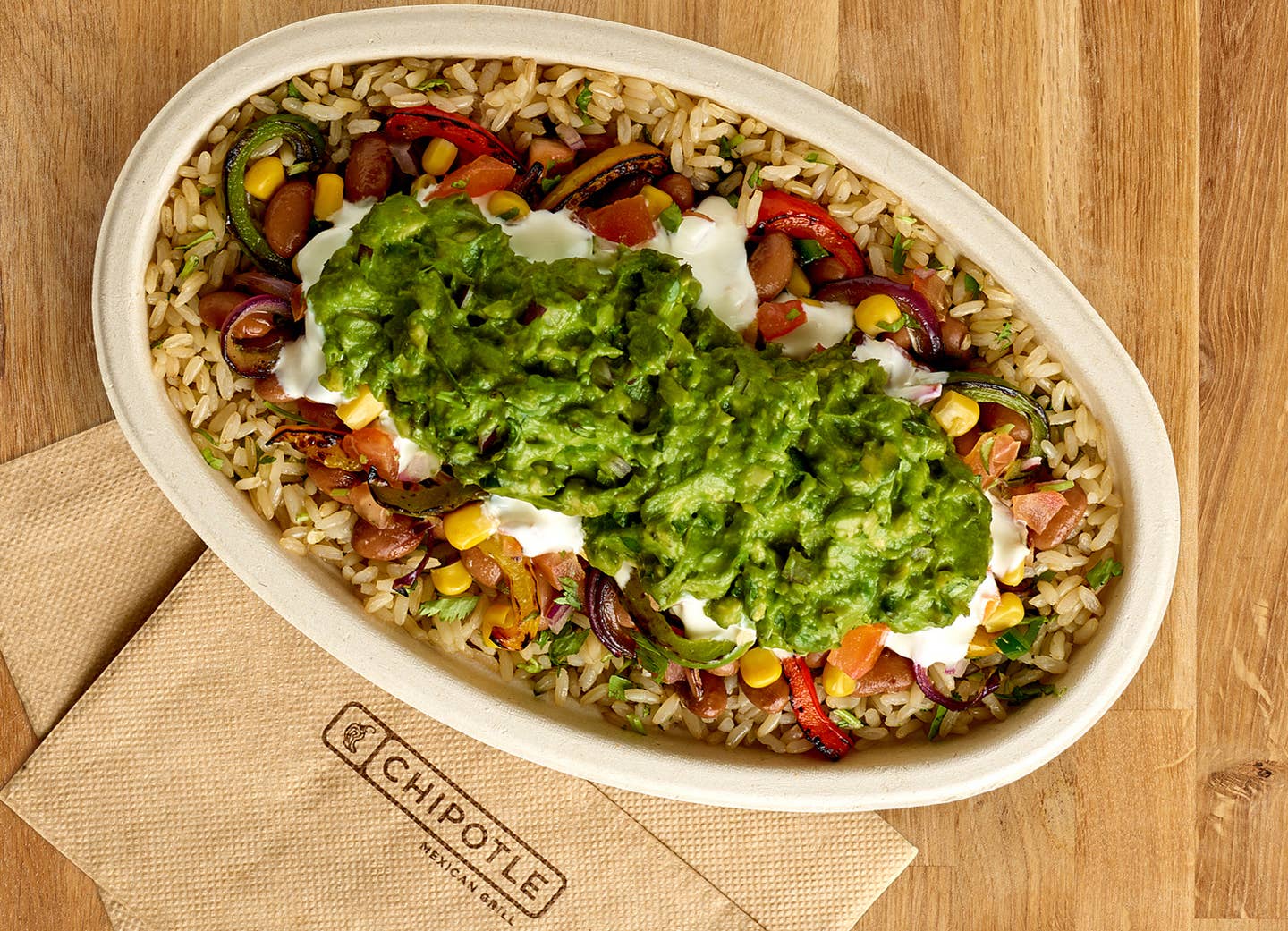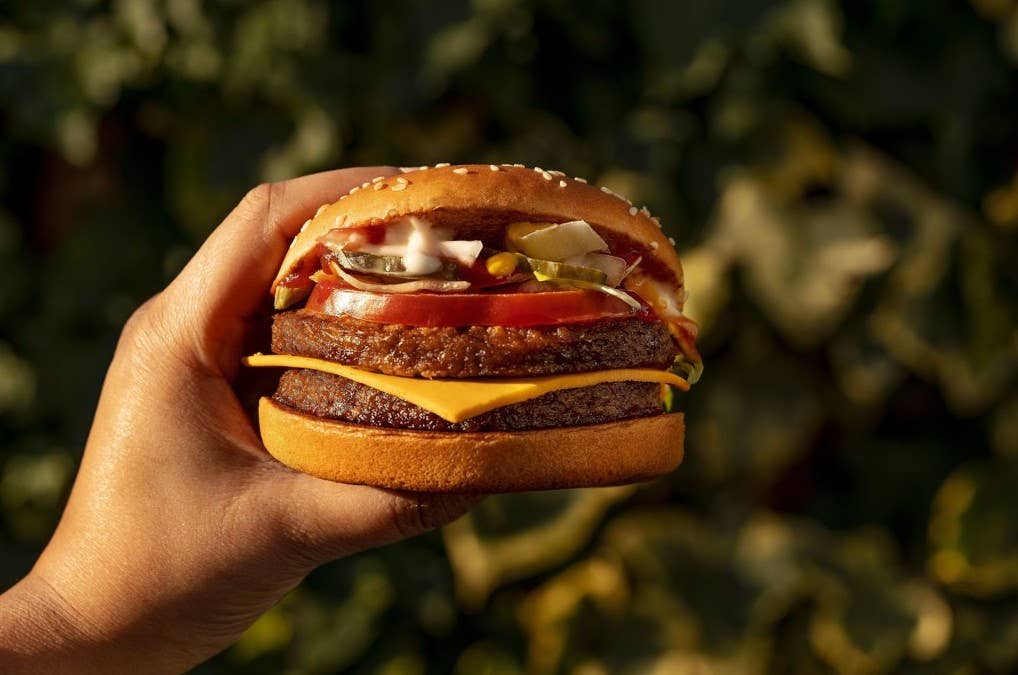
Craving Fatty Food? New Study Says Your Gut is Talking. How to Answer
If you're like most Americans, you love foods that are high in fat and just the whiff of french fries or Cinnabon makes you crave the taste of fatty foods like fries, donuts, or other fat-filled snack. That's because your gut is speaking to your brain, not the other way around, according to a new study from Columbia University researchers. They found that when it comes to high-fat foods, your gut is in the driver's seat, or specifically the bacteria that live there.
This wouldn't be a major problem unless it can be tied to the bigger picture of Americans' propensity toward obesity, type 2 diabetes, and an overall unhealthy diet, full of highly processed and fatty foods such as fried fast food and other nutrient-deficient calorie bombs. A disturbing fact: Nearly 60 percent of our calories now come from processed or fast food high in fat and sugar and low in antioxidants, fiber, and vital nutrients.
The Standard American Diet (SAD) is now blamed for a rising rate of obesity, heart disease, certain cancers tied to being overweight, as well as prediabetes (suffered by 80 million people in the US alone) and type 2 diabetes.
Approximately 34.2 million Americans suffer from diabetes, a number experts have attributed to obesity and the high-fat Western diet, but now, new research provides more insight into why we as a culture tend to crave fattier foods. For decades, a craving for fatty foods was blamed on taste preferences and even a lack of willpower.
This new research tells us that instead of being so hard on ourselves we can blame our gut bacteria, but in a vicious cycle, the more fatty foods you eat, the more those bacteria rule the gut and your microbiome (essentially the community of bacteria that live in your body) are doing the talking, not the healthier bacteria that thrive when you eat more vegetables, fruit, and high fiber foods in a plant-based diet.
How the Gut Drives Cravings
The Columbia authors sought to understand how fat consumption interacts with the body and the brain, specifically regarding dietary impulses. The study found that when fat enters the intestines it triggers a signal to the brain along neural pathways that increase the body's craving for more fatty foods. Researchers examined how fat consumption impacted dietary impulses when presented with unhealthy options, breaking down the myth that cravings are attributed to dietary preferences. By better understanding the gut-brain connection, the researchers hope to help tackle the problem of rising levels of obesity and diabetes.
"We live in unprecedented times, in which the overconsumption of fats and sugars is causing an epidemic of obesity and metabolic disorders," first author Mengtong Li, Ph.D. said. "If we want to control our insatiable desire for fat, science is showing us that the key conduit driving these cravings is a connection between the gut and the brain."
This research follows previous work on the addictive nature of sugar. In that study, researchers found that glucose initiates a similar gut-brain connection that intensifies our craving for sugar. Published in Nature, the glucose craving study found that the gut is driving both our desire for sugar and our cravings for fat.
How to Break the Cravings for Fat and Sugar
The only way to break the unhealthy fat and added sugar habit is to eat less of both and to add more healthy high-fiber foods that help the gut microbiome become more diversified and shift to so-called "healthy" bacteria that feed off of fiber foods like vegetables, leafy greens, fruit, legumes, nuts and seeds as well as minimally processed whole grains.
Healthy fats from foods like avocado, olives, and nuts are a different story and can be eaten in the context of a mostly plant-based diet low in processed foods. So even if you are not "feeling" it for a salad, it could be the first step in overriding the impulse to grab the first donut you see.
"Our research is showing that the tongue tells our brain what we like, such as things that taste sweet, salty, or fatty," Dr. Charles Zuker, a professor of biochemistry and molecular biophysics and of neuroscience at Columbia's Vagelos College of Physicians and Surgeons, said. "The gut, however, tells our brain what we want, what we need."
The Gut is Addicted to Unhealthy Fats
Li decided to conduct this experiment to explore how animals (whether it be mice or humans) respond to dietary fat including lipids and fatty acids. The mice were fed bottles with dissolved fats and bottles with sweet substances. Although sweet substances were initially attractive, the mice formed a preference for fatty water instead over a couple of days.
This preliminary work intends to explain how dietary preferences can be formed, resulting in unhealthy habits. Examining the nerve associated with gut and brain communication, Li and her team found a spike in neural activity when consuming fatty foods.
"These interventions verified that each of these biological steps from the gut to the brain is critical for an animal's response to fat," Li said. "These experiments also provide novel strategies for changing the brain's response to fat and possibly behavior toward food."
This study provides a foundational understanding of how the body reacts to high-fat foods. The research will require several follow-ups as well as human examination, but the data shows how fat consumption can alter the brain's cravings. Worldwide, obesity rates have nearly doubled since 1980, making this research all the more urgent.
"This exciting study offers insight about the molecules and cells that compel animals to desire fat," Dr. Scott Sterson, an uninvolved professor of neuroscience at the University of California, San Diego, commented. "The capability of researchers to control this desire may eventually lead to treatments that may help combat obesity by reducing consumption of high-calorie fatty foods."
Eating Plant-Based for Optimal Health
Currently, obesity affects above one-third of Americans, increasing the risks of type 2 diabetes, cardiovascular disease, and other chronic health issues. However, research has shown that plant-based interventions have proven to help offer relief to reduce body fat. By avoiding unhealthy, high-fat foods such as processed meats or cheese, people suffering from obesity could curb the negative effects and lower the risk factors.
"The overconsumption of cheap, highly processed foods rich in sugar and fat is having a devastating impact on human health, especially among people of low income and in communities of color," Zuker said. "The better we understand how these foods hijack the biological machinery underlying taste and the gut-brain axis, the more opportunity we will have to intervene."
Bottom Line: To Conquer Cravings for Fat and Sugar, Eat More Plant-Based
This recent study is just one more example of the powerful gut-brain connection, and even if your gut is calling out for fat and sugar, the best strategy is to quiet the cravings by eating more plant-based foods such as vegetables, fruits, legumes nuts, seeds and minimally processed grains. Other research indicates that drinking coffee could help lower your lifetime risk of developing type two diabetes.
For more plant-based happenings, visit The Beet's News articles.
The 13 Best Foods to Boost Your Immune System to Fight Off COVID-19 Symptoms
Here are the best foods to eat on repeat, to boost immunity and fight inflammation. And stay off the red meat.
1. Citrus for Your Cells and Healing
Your body does not produce vitamin C, which means you need to get it daily to have enough to create healthy collagen (the building blocks for your skin and healing).The recommended daily amount to shoot for is 65 to 90 milligrams a day, which is the equivalent of one small glass of orange juice or eating a whole grapefruit. Almost all citrus fruits are high in vitamin C. With such a variety to choose from, it's easy to get your fill.
2. Red Peppers to Pump Up Skin and Boost Immunity with Twice the Amount of Vitamin C as an Orange Has
Want even more vitamin C, add red bell peppers to your salad or pasta sauce. One medium-sized red bell pepper contains 152 milligrams of vitamin C, or enough to fulfill your RDA. Peppers are also a great source of beta carotene, a precursor of vitamin A (retinol). How much beta carotene do you need a day: You should try to get 75 to 180 micrograms a day which is the equivalent of one medium bell pepper a day. But a red pepper has more than two and a half times your RDA for vitamin C so eat them all winter long.
3. Broccoli, But Eat It Nearly Raw, to get the Most Nutrients Out of It!
Broccoli may be the most super of superfoods on the planet. It's rich in vitamins A and C as well as E. The phytochemicals in it are great for arming and strengthening your immune system.How much lutein should you eat in a day: There is no RDA for lutein, but experts say get at least 6 milligrams.
4. Garlic, Eaten By the Clove
Garlic isn't just a great flavor-enhancer, it's essential for your health. Garlic’s immune-boosting properties are tied to its sulfur-containing compounds, such as allicin. Allicin is thought to improve your immune cells' ability to fight off colds and flu, and viruses of all kinds. (Smelling more garlic on the subway? It could be smart coronavirus management.) Garlic also has anti-microbial and anti-viral properties thought to fight off infections. How much should you eat in a day: The optimal amount of garlic to eat is more than most of us can fathom: Two to three cloves a day. While that may not be doable, realistically, some people take garlic supplements to get 300-mg dried garlic in a powdered tablet.
5. Ginger is a Power Player for Immunity and Digestion
Ginger is another ingredient that has super properties when it comes to fighting off illness. It has been shown to decrease inflammation, which can help if you get swollen glands or a sore throat or any inflammatory ailment. Gingerol, the main bioactive compound in ginger, is a relative of capsaicin, and is responsible for much of its medicinal properties. It has powerful anti-inflammatory and antioxidant benefits.How much should you eat a day: Most recommendations land on 3–4 grams of ginger extract a day, or up to four cups of ginger tea, but no more than 1 gram a day if you are pregnant. Some studies have linked high dosages to an increased risk of miscarriage.
6. Spinach, Wilted, Not Steamed (Also Kale and Dark Leafy Greens of All Kinds)
Spinach is not only packed with vitamin C but also antioxidants and beta carotene, both of which give your immune system the healthy boost it needs to fight off invaders. Don't overcook your spinach, since the more it's cooked the less active the antioxidants will be. If you eat it raw or lightly steamed you'll keep more of the nutrients intact.How much should you eat a day: Aim for 1 cup fresh spinach or 1/2 cup cooked per day, but this is the right moment to try the raw or slightly wilted approach. Order warm or wilted spinach salad when you go out, or make it yourself with olive oil, pine nuts, and vegan parm.
7. Almonds for the Win, Pop Them Like Candy
Vitamin E in almonds will help ward off colds and flu and is key to your immune system humming along. It’s a fat-soluble molecule, meaning it requires the presence of fat to be absorbed, so nuts are the perfect package for E to make it into your system.How much should you eat in a day: A half-cup serving, or 46 whole, shelled almonds, provides almost 100 percent of your RDA of vitamin E. Almonds are great for you but they don't come with a "free" pass, since 1/4 cup is a serving and has 162 calories, so double that for your RDA and you're eating about 325 calories. Throw them into smoothies instead.
8. Turmeric to Fight Inflammation, Put it In Your Tea or Smoothie
This highly pigmented spice is known for its anti-inflammatory qualities. How it helps immunity? It decreases exercise-induced muscle damage. Tumeric bolsters the immune system by stimulating antibody formation and people with auto-immune diseases are told by their doctors to take 500 mg of curcumin daily to reduce inflammation and stave off soreness.How much should you eat in a day: Try adding extra Tumeric to your diet during periods of stress or during flu season. Or take 500-2,000 mg of curcumin to help fight inflammation and power up your immune system.
9. Green Tea by the Gallon, Skip the Coffee and Sip this Instead
Green tea has high levels of EGCG, (epigallocatechin gallate) a hard-working antioxidant that is known to boost immune function. Green tea is steamed so the EGCG is still active when you drink it.Green tea also contains L-theanine, an anti-oxidant which appears to help in the production of T-cells in your body, the killer L-theanine may aid in the production of germ-fighting compounds in your T-cells.How much green tea should you drink in a day: The optimal amount is three to five cups in a day, but most people won't get to that level. Any amount is better than nothing. Swap out a usual beverage daily for green tea could improve your health.
10. Papaya, The Tropical Healer to Keep You Vacation-Healthy All Year Round
Papaya delivers over twice your recommended daily amount of vitamin C in one fruit. It also contains an enzyme called papain that has anti-inflammatory effects -- and inflammation is one factor in most illnesses, so avoiding it can help your body fight off bacterial infections like sinusitis.Papayas contain potassium, vitamin B, and folate, which is a powerful cell rebuilder. Exactly how folic acid works to build immunity is linked to its role in protein synthesis, and researchers think that any mechanism in which cells proliferate can be affected (which is why it's critical for pregnant women). People who are folate-deficient have compromised immune systems.How much folate should you eat a day: Whether you are pregnant or not, folate (vitamin B9) is a great vitamin to keep your cells healthy and strong. The recommendation is 400 micrograms a day, or get it from legumes, spinach, papayas, and avocados.
11. Kiwis, a Vitamin Powerhouse
Kiwis are full of folate, vitamin K, vitamin C, and potassium. These vitamins in combination work in the body to build healthy cells, fight infection and keep your immune system humming along. Vitamin K deficiency is rare but when people don't have enough they suffer from weak bones and compromised immune systems. The inflammation system in the body is also dependent on vitamin K, especially your killer T cells that mobilize and fight cancer and other diseases.How much should you eat in a day: Vitamin K is one of the unsung heroes of the body. Women should get 90 micrograms a day, and men should have 120 micrograms.
12. Sunflower seeds to sprinkle on salads or eat by themselves
Sunflower seeds are especially healthy since they provide phosphorus, magnesium and vitamin B-6 as well as vitamin E. Your immune system needs vitamin E to function at full throttle. You can also get vitamin E from avocados and spinach and broccoli.How much should you eat in a day: Anywhere from 1 ounce (30 grams) per day to a healthy handful is considered healthy, but because they are high in sodium you might want to refrain from eating the entire bag. The raw seeds have 204 calories per quarter cup.
13. Miso, Soup or Paste to Add to Your Soups and Salad Dressings
The nutrients in miso -- which is a soybean paste that has been fermented with salt and a koji starter -- boosts immune system function by delivering healthy probiotics to the gut, making your microbiome healthier. How does Miso benefit your immune system? It is a "sirt" food, which are foods that contain high levels of ‘sirtuins’ or proteins that regulate cells and activate metabolism. A diet high in sirts is believed to lead to weight loss, increased wellness and longevity.How much should you eat in a day? Researchers believe that consuming one bowl of miso soup per day, as is the tradition in Japan, lowers the risks of breast cancer. Other than its high sodium content there is no reason to stay away from miso with all its varied health benefits. We say cheers to that.
More From The Beet






